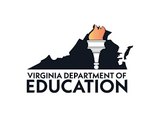
Sample performance assessment aligned to the Science Standards of Learning.
- Subject:
- Force/Motion/Energy
- Science
- Material Type:
- Assessment
- Author:
- Anne Petersen
- Holli Cook
- Date Added:
- 12/18/2020

Sample performance assessment aligned to the Science Standards of Learning.

PhD Science Grade Levels K-2 is available as downloadable PDFs. The OER consists of Teacher Editions and student Science Logbooks for every module.
With PhD Science¨, students explore science concepts through authentic phenomena and events-not fabricated versions-so students build concrete knowledge and solve real-world problems. Students drive the learning by asking questions, gathering evidence, developing models, and constructing explanations to demonstrate the new knowledge they've acquired. The coherent design of the curriculum across lessons, modules, and grade levels helps students use the concepts they've learned to build a deep understanding of science and set a firm foundation they'll build on for years to come.
Cross-curricular connections are a core component within PhD Science. As an example, every module incorporates authentic texts and fine art to build knowledge and create additional accessible entry points to the topic of study.
Three-dimensional teaching and learning are at the heart of the curriculum. As students uncover Disciplinary Core Ideas by engaging in Science and Engineering Practices and applying the lens of Cross-Cutting Concepts, they move from reading about science to doing science.

PhD Science Grade Levels K-2 is available as downloadable PDFs. The OER consists of the Teacher Edition and student Science Logbook.
Throughout this module, students study the anchor phenomenon, wayang shadow puppetry, and build an answer to the Essential Question: How do puppeteers use light to tell stories during wayang shows? As students learn about each new concept, they revisit and refine a model that shows how light interacts with the parts of a wayang show. At the end of the module, students use their knowledge of light interactions to explain the anchor phenomenon, and they apply these concepts to a new context in an End-of-Module Assessment. Through these experiences, students develop an enduring understanding that the way light interacts with objects affects what people see.
With PhD Science¨, students explore science concepts through authentic phenomena and events-not fabricated versions-so students build concrete knowledge and solve real-world problems. Students drive the learning by asking questions, gathering evidence, developing models, and constructing explanations to demonstrate the new knowledge they've acquired. The coherent design of the curriculum across lessons, modules, and grade levels helps students use the concepts they've learned to build a deep understanding of science and set a firm foundation they'll build on for years to come.
Cross-curricular connections are a core component within PhD Science. As an example, every module incorporates authentic texts and fine art to build knowledge and create additional accessible entry points to the topic of study.
Three-dimensional teaching and learning are at the heart of the curriculum. As students uncover Disciplinary Core Ideas by engaging in Science and Engineering Practices and applying the lens of Cross-Cutting Concepts, they move from reading about science to doing science.

PhD Science Grade Levels K-2 is available as downloadable PDFs. The OER consists of the Teacher Edition and student Science Logbook.
Throughout the module, students study the anchor phenomenon, birds building nests, and develop an answer to the Essential Question: Why do different kinds of birds use certain materials to build their nests? As students learn about each new concept, they revisit and refine a model that represents how to describe different materials and how birds use those materials to build their nests. At the end of the module, students use their knowledge of how matter can be described, classified, and used to explain the anchor phenomenon, and they apply these concepts to a new context in an End-of-Module Assessment. Through these experiences, students learn that understanding the properties of matter and the ways matter can change helps people use materials for specific purposes.
With PhD Science¨, students explore science concepts through authentic phenomena and events-not fabricated versions-so students build concrete knowledge and solve real-world problems. Students drive the learning by asking questions, gathering evidence, developing models, and constructing explanations to demonstrate the new knowledge they've acquired. The coherent design of the curriculum across lessons, modules, and grade levels helps students use the concepts they've learned to build a deep understanding of science and set a firm foundation they'll build on for years to come.
Cross-curricular connections are a core component within PhD Science. As an example, every module incorporates authentic texts and fine art to build knowledge and create additional accessible entry points to the topic of study.
Three-dimensional teaching and learning are at the heart of the curriculum. As students uncover Disciplinary Core Ideas by engaging in Science and Engineering Practices and applying the lens of Cross-Cutting Concepts, they move from reading about science to doing science.
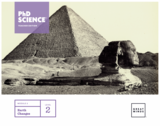
PhD Science Grade Levels K-2 is available as downloadable PDFs. The OER consists of the Teacher Edition and student Science Logbook.
Throughout the module, students study the anchor phenomenon, the transformation of Surtsey, and build an answer to the Essential Question: How can the island of Surtsey change shape over time? As students learn about each new concept, they revisit and refine a model that represents the formation and transformation of Surtsey. At the end of the module, students use their knowledge of how land changes over time to explain the anchor phenomenon, and they apply these concepts to a new context in an End-of-Module Assessment. Through these experiences, students develop an enduring understanding that natural events transform Earth's land as time passes.
With PhD Science¨, students explore science concepts through authentic phenomena and events-not fabricated versions-so students build concrete knowledge and solve real-world problems. Students drive the learning by asking questions, gathering evidence, developing models, and constructing explanations to demonstrate the new knowledge they've acquired. The coherent design of the curriculum across lessons, modules, and grade levels helps students use the concepts they've learned to build a deep understanding of science and set a firm foundation they'll build on for years to come.
Cross-curricular connections are a core component within PhD Science. As an example, every module incorporates authentic texts and fine art to build knowledge and create additional accessible entry points to the topic of study.
Three-dimensional teaching and learning are at the heart of the curriculum. As students uncover Disciplinary Core Ideas by engaging in Science and Engineering Practices and applying the lens of Cross-Cutting Concepts, they move from reading about science to doing science.
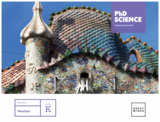
PhD Science Grade Levels K-2 is available as downloadable PDFs. The OER consists of the Teacher Edition and student Science Logbook.
Throughout this module, students study the anchor phenomenon, the cliff dwellings at Mesa Verde, and build an answer to the Essential Question: How did the cliff dwellings at Mesa Verde protect people from the weather? As students learn about each new concept, they develop and refine a model that represents a cliff dwelling and use that model to explore how cliff dwellings protected people from the weather. At the end of the module, students use their knowledge of weather to explain the anchor phenomenon, and they apply their learning to a new context in an End-of-Module Assessment. Through these experiences, students begin to establish an enduring understanding of weather and its effects. Specifically, students develop an understanding of the parts of weather, the effects weather has on people and their surroundings, and the ways people prepare for severe weather.
With PhD Science¨, students explore science concepts through authentic phenomena and events-not fabricated versions-so students build concrete knowledge and solve real-world problems. Students drive the learning by asking questions, gathering evidence, developing models, and constructing explanations to demonstrate the new knowledge they've acquired. The coherent design of the curriculum across lessons, modules, and grade levels helps students use the concepts they've learned to build a deep understanding of science and set a firm foundation they'll build on for years to come.
Cross-curricular connections are a core component within PhD Science. As an example, every module incorporates authentic texts and fine art to build knowledge and create additional accessible entry points to the topic of study.
Three-dimensional teaching and learning are at the heart of the curriculum. As students uncover Disciplinary Core Ideas by engaging in Science and Engineering Practices and applying the lens of Cross-Cutting Concepts, they move from reading about science to doing science.

PhD Science Grade Levels K-2 is available as downloadable PDFs. The OER consists of the Teacher Edition and student Science Logbook.
Throughout this module, students study the anchor phenomenon--tugboats moving cargo ships--and build an answer to the Essential Question: How do tugboats move cargo ships through a harbor? As students focus on two concepts, they build a model that represents the movement of tugboats and cargo ships through New York Harbor. Students develop an understanding of what makes objects start to move, how pushes and pulls can change the way objects move, and what happens when two objects bump into each other. By the end of the module, students use their knowledge of pushes and pulls to explain the anchor phenomenon, and they apply learned concepts to a new context in an End-of-Module Assessment. As a result of these experiences, students begin to develop an enduring understanding that pushes and pulls can start, stop, and redirect an object's movement.
With PhD Science¨, students explore science concepts through authentic phenomena and events-not fabricated versions-so students build concrete knowledge and solve real-world problems. Students drive the learning by asking questions, gathering evidence, developing models, and constructing explanations to demonstrate the new knowledge they've acquired. The coherent design of the curriculum across lessons, modules, and grade levels helps students use the concepts they've learned to build a deep understanding of science and set a firm foundation they'll build on for years to come.
Cross-curricular connections are a core component within PhD Science. As an example, every module incorporates authentic texts and fine art to build knowledge and create additional accessible entry points to the topic of study.
Three-dimensional teaching and learning are at the heart of the curriculum. As students uncover Disciplinary Core Ideas by engaging in Science and Engineering Practices and applying the lens of Cross-Cutting Concepts, they move from reading about science to doing science.
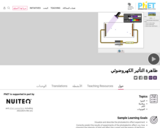
See how light knocks electrons off a metal target, and recreate the experiment that spawned the field of quantum mechanics.

Students will investigate potential and kinetic energy, and observe that energy is continually transferred from one object to another between various forms.This module was developed by Christina Owens as part of a Virginia Commonwealth University STEM initative sponsored by the Virginia Department of Education.
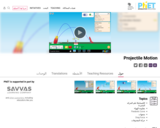
Blast a Buick out of a cannon! Learn about projectile motion by firing various objects. Set the angle, initial speed, and mass. Add air resistance. Make a game out of this simulation by trying to hit a target.

Students will download and view a video of a ball traveling with projectile motion. Students will analyze the video to determine the ball's launch angle and launch velocity following the ball's first bounce.

Students will gain experience and knowledge using technology while learning. They will learn how to solve their tech problems and learn about the pumpkin life cycle!
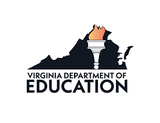
This science instructional plan (SIP) supports the Science Standards of Learning.

This Science Instructional Plan supports the Science Standards of Learning.

Broadcast radio waves from KPhET. Wiggle the transmitter electron manually or have it oscillate automatically. Display the field as a curve or vectors. The strip chart shows the electron positions at the transmitter and at the receiver.

Learn about different types of radiometric dating, such as carbon dating. Understand how decay and half life work to enable radiometric dating to work. Play a game that tests your ability to match the percentage of the dating element that remains to the age of the object.
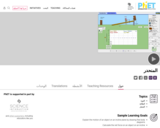
Explore forces, energy and work as you push household objects up and down a ramp. Lower and raise the ramp to see how the angle of inclination affects the parallel forces acting on the file cabinet. Graphs show forces, energy and work.

Here's a three day (4.5 hours) project that introduces and engages Science 6 students in describing or modeling energy transformations, as well as comparing and analyzing advantages and challenges for each type of energy source. This project has students practicing science content from SOLs 6.1, 6.4, 6.6, and 6.9.
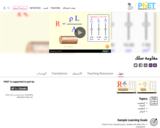
Learn about the physics of resistance in a wire. Change its resistivity, length, and area to see how they affect the wire's resistance. The sizes of the symbols in the equation change along with the diagram of a wire.
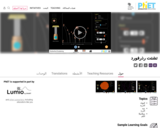
How did Rutherford figure out the structure of the atom without being able to see it? Simulate the famous experiment in which he disproved the Plum Pudding model of the atom by observing alpha particles bouncing off atoms and determining that they must have a small core.